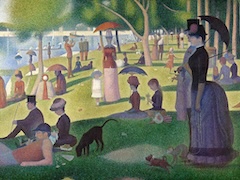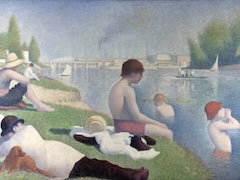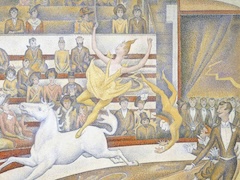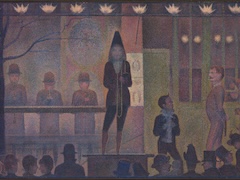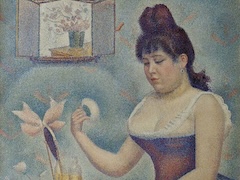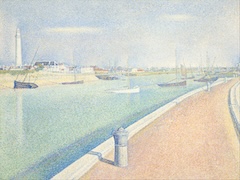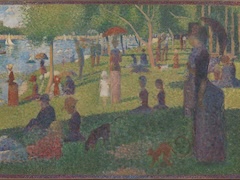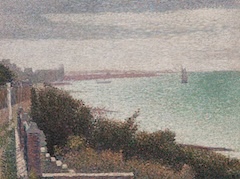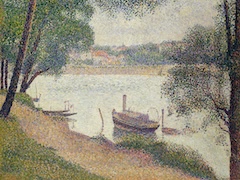La rue Saint-Vincent by Georges Seurat
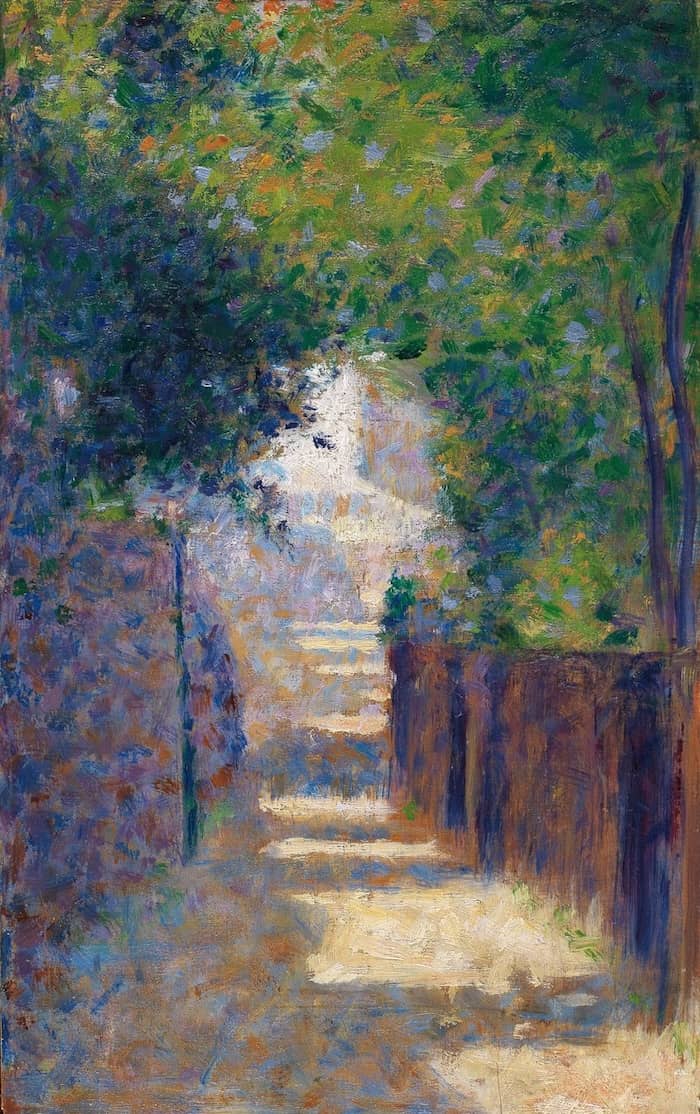
Long favored by painters, La rue Saint-Vincent was (and is) a picturesque street in the heart of Montmartre, running east-west from an ancient cemetery to the rue du Mont Cenis. One of its best-known renderings is by Corot (La rue Saint-Vincent, Musée des Beaux-Arts, Lyons). Still having the character of a village street far from Paris, it is flanked on the south side by the garden of Montmartre where Renoir had his studio and where Montmartrais still raises grapes.
Seurat painted another view of the street, La rue Saint-Vincent, that looks even more like a village lane. By choosing a premodern view of the city, Seurat was faithful to his early love of mid-century effects. Although he drew city folk and painted the suburbs and their factories, he never painted the city's bustling streets and boulevards in oil, so his modernity was a complex blend of old and new. The view in this panel is westward through a tunnel of luxuriant foliage as the street slants down from the top of the slope.
It is midday in summer because the sunlight is from the south at a steep angle. Shadows of the large trees of the garden on the left cross the road and climb up the wall, staining it purple and blue. Their progressive diminution, an effect Corot often used for country lanes and wooded paths, spells out the extension of the street in the distance. The bright yellow-greens and oranges of the foliage above are opposed by the blues, lavenders, and purples below. Blues and the warm panel color appear on top and bottom, unifying a composition split by its hollow center.

